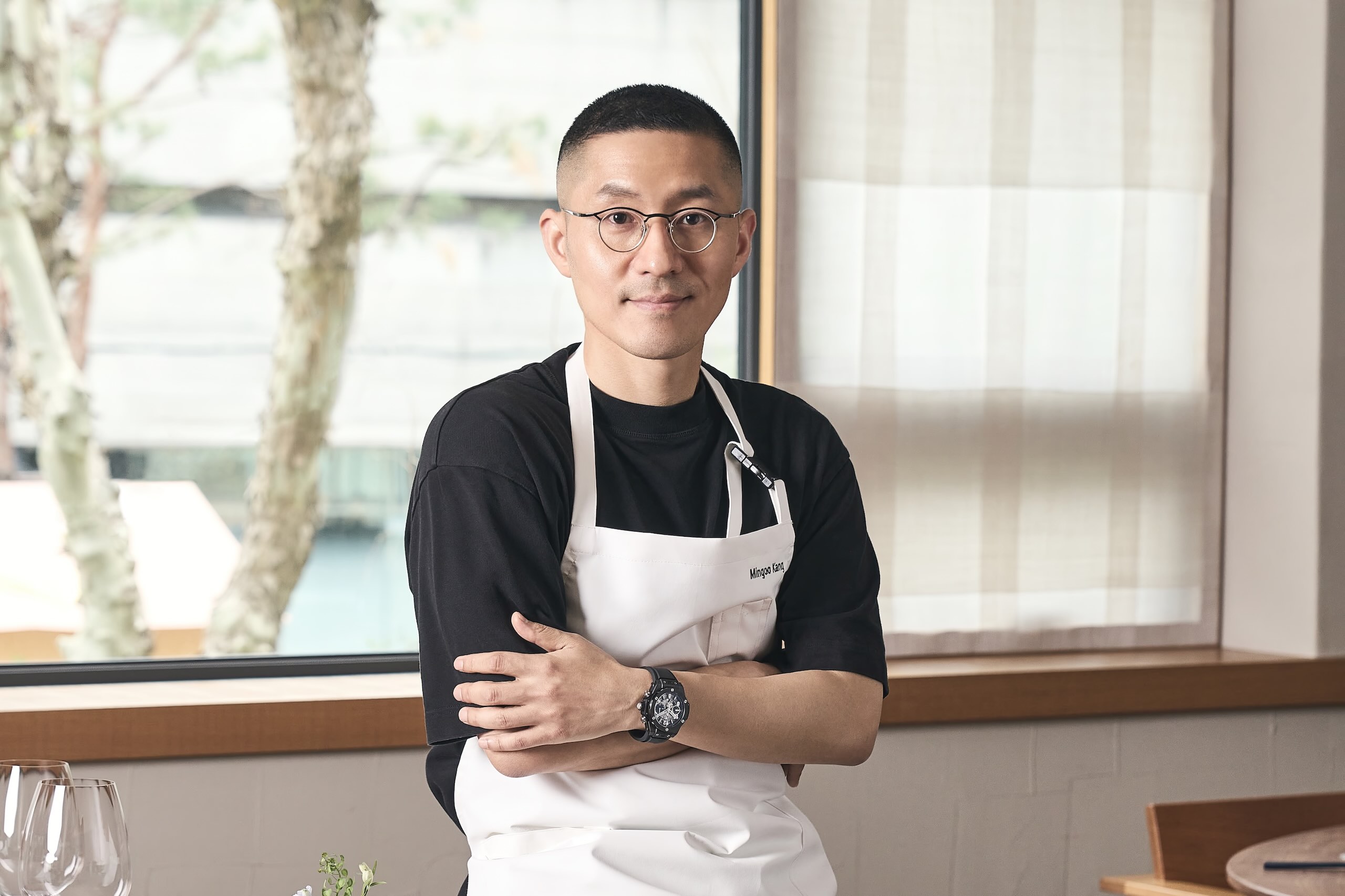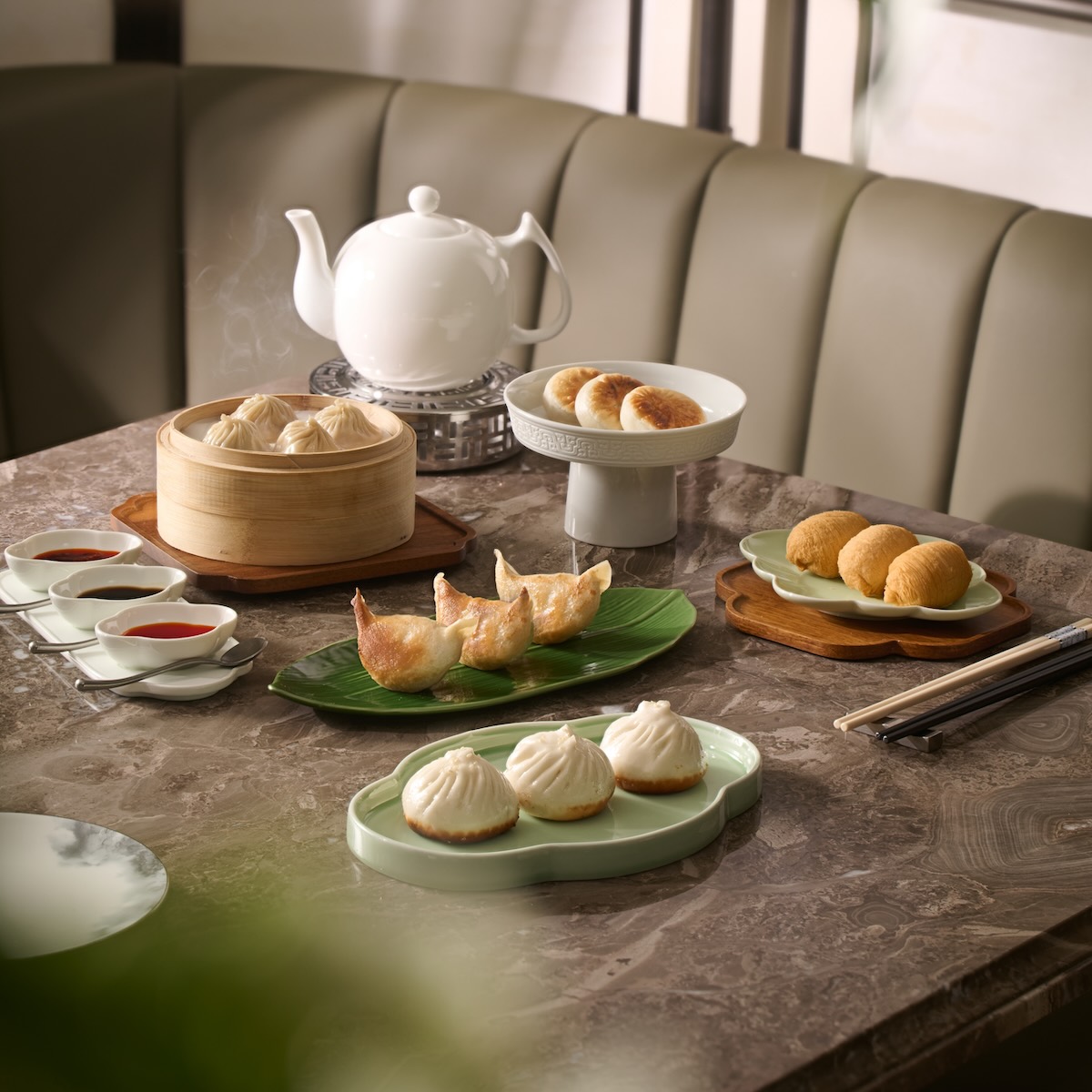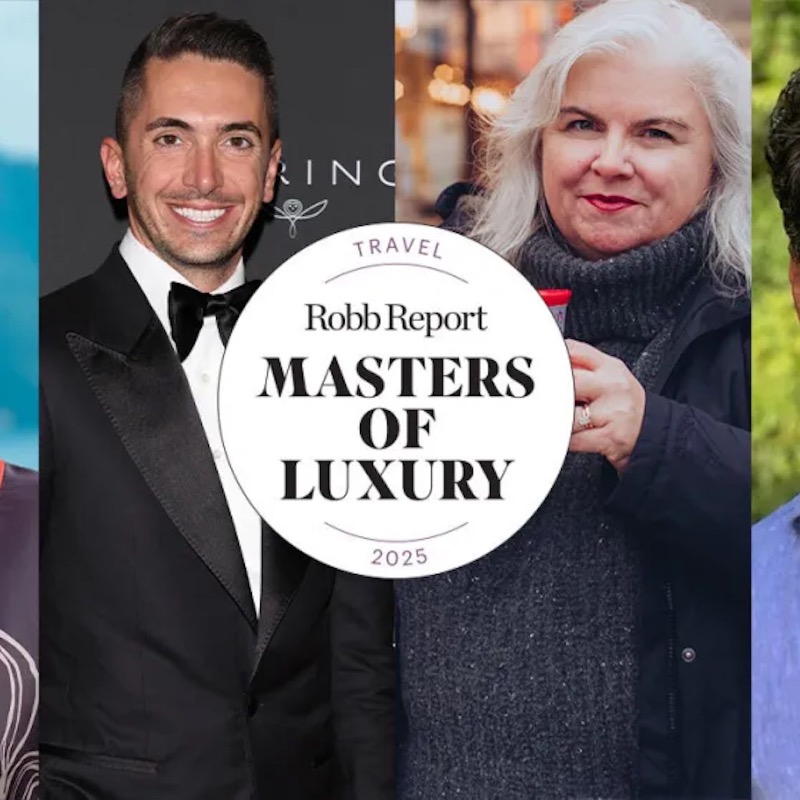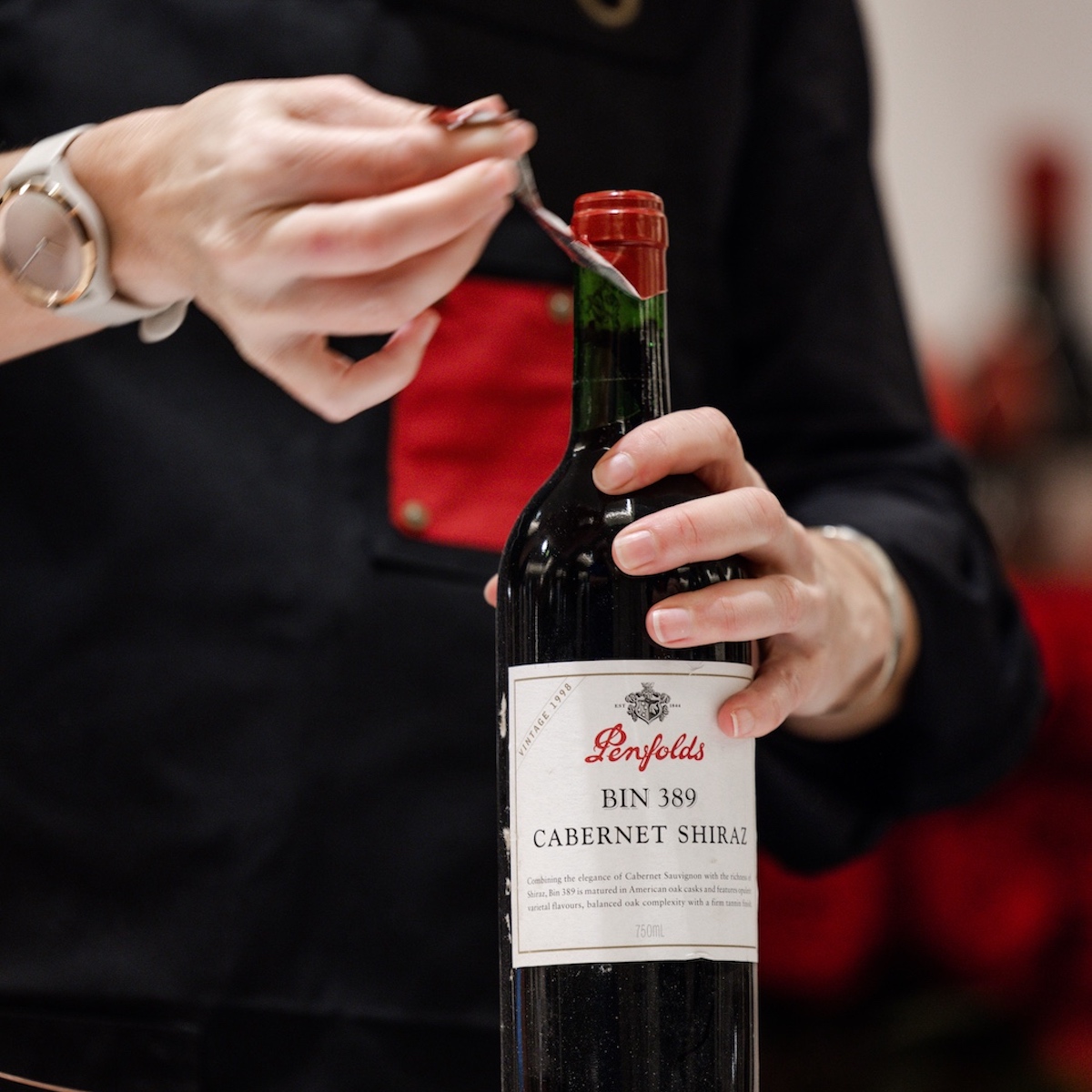This story is part of a series of features covering MGM x RR1HK Culinary Masters Macau 2025, hosted at MGM COTAI in Macau on 7–8 June 2025.
When chef-owner Kang Mingoo opened Mingles in Seoul in 2014, little did he know that his forward-thinking take on transforming Korean cuisine for a modern audience would soon sweep the globe. Creative, experimental, and always with a respectful nod at tradition, Mingles’s unique hansik (Korean cuisine) captures the soul of Korean flavours in unexpected ways, making Kang an ideal addition to the star-studded group of chefs leading MGM x RR1HK Culinary Masters Macau 2025, set to take place at MGM COTAI on 7–8 June 2025.
Kang had known from a young age that he wanted to be a chef, and he pursued his goal with vigour, completing apprenticeships and internships at various establishments around the world. His tenure at Nobu Bahamas marked him as the restaurant’s youngest head chef, and his ascent to culinary stardom has been bolstered by numerous accolades and achievements over the years, enough to fill a trophy cabinet. After learning from culinary giants, the likes of which include Martín Berasategui, Cho Hee-sook, and Buddhist nun Jeong Kwan, Kang set out to meld his international experiences with the fundamental cornerstones of Korean cuisine, balancing innovation and tradition in equal measure to honour his heritage.
Mingles gained its first Michelin star in 2017 when the Michelin Guide launched in Seoul, and a second star was quickly collected in 2018. Kang’s peers in the industry voted for him to receive the Inedit Damm Chefs’ Choice Award by Asia’s 50 Best Restaurants 2021. He was honoured on the Top 100 Best Chef list for two years running and received the Three Knives distinction in 2024. Remarkably, amidst consulting for brands in Seoul, opening a second restaurant in Hong Kong, and actively joining collaboration events with other award-winning establishments around the world, Kang also carved out time to co-author a cookbook in 2024.
Most recently, the celebrated chef led Mingles to become the only three-Michelin-star restaurant in Korea, and secure the No. 5 spot on Asia’s 50 Best Restaurants 2025, its highest-ever position. Not bad for a restaurant that opened just over a decade ago.
Robb Report Hong Kong speaks with Kang ahead of the highly anticipated MGM x RR1HK Culinary Masters Macau 2025 to dive into his vision for modern Korean cuisine, why jang (fermented soybean paste) is the basis of his gastronomic philosophy, and his mission to advance Mingles as a dining destination that defies expectations.
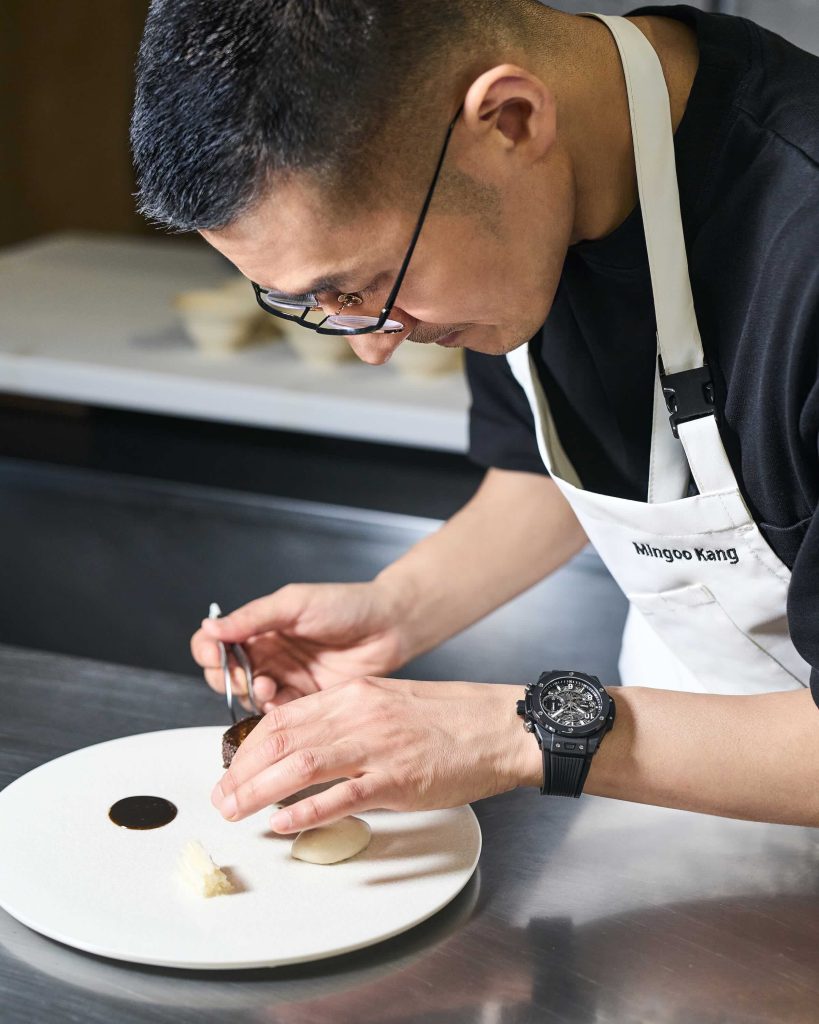
Who or what inspired you to become the chef you are today?
I didn’t really have a role model. However, I naturally liked making new things since I was young, and the fact that cooking is evaluated based on taste was appealing. I also liked eating, so I wanted to be a chef since elementary school.
Your cooking style is often described as an innovative and forward-thinking take on traditional Korean cuisine. What inspired you to adopt this approach to your food?
I get a lot of inspiration from traditional Korean food and try to express it in a non-obvious way by using seasonal ingredients. I get ideas by experiencing various food cultures and developing new menus based on them. In particular, temple food is a dish made with vegetables, so even if you overeat, it doesn’t put a strain on your stomach, and the various fermentation techniques are attractive. Through this, I learned about fermentation culture, which is an important element of Korean food, and the mindset for dealing with the essence of ingredients.
A bulk of your career was built overseas at places such as Nobu Bahamas, and in Spain while training with Martín Berasategui. How did your time abroad influence your culinary style?
While working abroad, I worked mainly in restaurants that reinterpreted their own cuisine and received great responses from people all over the world. While working there, I discovered new possibilities for Korean food. Through my various experiences, I became more determined to make my own Korean food.
How do you balance the teachings of your time abroad with Korean mentors such as Cho Hee-sook and Jeong Kwan? How have they influenced your approach to Korean cookery?
Chef Cho Hee-sook [has] a mind that constantly studies and explores—this is the secret to presenting such creative Korean food without going beyond the boundaries of Korean food. Priestess Jeong Kwan [has] a mind that approaches food as a practice, focusing on the essence of ingredients.
I have been interested in Korean food since I started cooking, but I have never studied it properly. Since it is food that I have always eaten, I thought I would be able to make new Korean food through overseas experience, but home-cooking and professional Korean food are really different. Meeting [them] gave me a new perspective on studying Korean food.
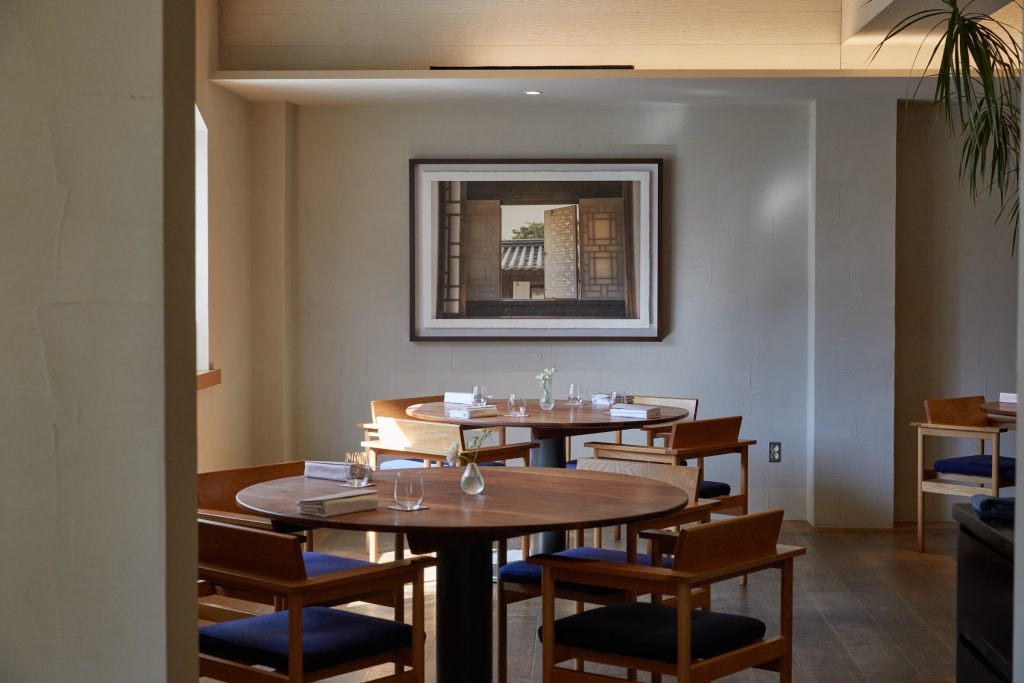
What drew you back to Seoul to open Mingles? What challenges did you face at first?
I thought I could do it because I had been eating Korean food my whole life, but the moment I realised that the Korean food I could make was limited to home-cooking, I had to study more about professional Korean food, the Korean food that would be presented at Mingles.
Can you tell us about your vision for a modern interpretation of Korean cuisine?
In order for Korean cuisine to be established around the world, it is important to understand the essence of Korean cuisine and to globalise it while not losing its tradition. It is essential to maintain the identity of Korean cuisine while localising it in various countries. In other words, it is important to respect tradition at the core while adding modernity.
Jang (fermented soybean paste) is one of your specialities at Mingles. What’s your personal relationship with this ingredient and why is it special to you and your cooking?
Jang is the basis of Korean food and is used in most dishes. Using jang creates a deep and rich flavour, which is a key element of Korean food. At Mingles, we believe it is very important to convey the taste of Korean food, and it can be used in various dishes beyond Korean food. I wanted to make the importance of jang known to the world through the book [Jang: The Soul of Korean Cooking].
What is your favourite dish or recipe that you’ve developed, and why?
It’s hard to pick a specific menu. The menu I’m most interested in these days is Mingling Pot. It recreates the soup culture, dumpling culture, and wrap culture of Korean cuisine with seasonal ingredients. Many ingredients and techniques are put into one bowl, and it’s completed with broth made from anchovies and seasoned with Mingles’s ganjang (Korean soy sauce). It’s called Mingling Pot because it blends so well and becomes Mingling.
In traditional Korean cuisine, a bowl of rice or noodle often follows the main course, and bibimbap is one of the most beloved examples of such dishes. At Mingles, however, the tasting menu is longer and more diverse than a typical Korean course meal, so we chose to reinterpret bibimbap not as part of the main dish, but as a dessert.
Creamy rice pudding is made with glutinous rice and served with crispy puffed rice for texture. A scoop of rice ice cream sits on top, surrounded by seasonal herbs and greens, just like the assorted vegetables found in classic bibimbap. A drizzle of sesame oil and Mingles’s house-made hansik ganjang adds depth and gamchil-mat (savoury taste), creating a uniquely sweet and savoury dessert expression of one of Korea’s most iconic dishes.
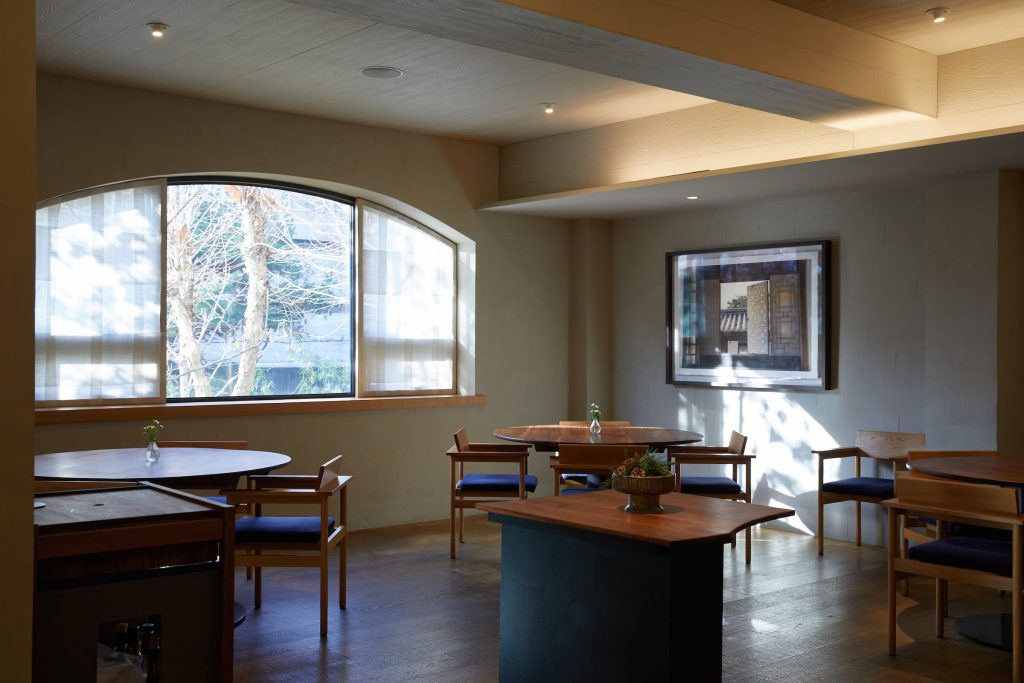
You’ve gained high honours in the food world. What’s your secret to success?
I think it is a great happiness and luck to have a job that matches what you like to do. Because cooking is what I like and what I am good at.
Another thing to mention is teamwork. I always think about whether my team members are all moving forward with the same goal and whether I am inspiring them. Good teamwork is an important factor in running a successful restaurant.
A memorable restaurant experience is more than just the food. What special considerations do you take at Mingles to make sure the guests have an immersive experience that helps them appreciate the food and the dining aspect so much more?
Providing a unique experience that can only be felt at Mingles. The most important thing is to present new Korean cuisine with good ingredients and seasonal ingredients.Through Mingles’s menu, I want to experience the characteristics of Korean cuisine and change the perception or limitations that customers have had about Korean cuisine. I also hope that Mingles will become a restaurant that expands the realm of Korean cuisine.
You have recently been named a Friend of the Brand by Swiss watchmaker Hublot. What parallels you do see between the worlds of gastronomy and horology?
I think Hublot is a brand that demonstrates craftsmanship based on respect for tradition. I also felt that the fact that it uses unconventional materials that watch brands do not use is similar to my food, and that it also creates heritage.
MGM x RR1HK Culinary Masters Macau 2025 brings different chefs from all over the world together in one place for an extraordinary gastronomic exchange. What are you most excited about for the event?
I get a lot of inspiration from meeting artisans from different fields. I am so excited to be invited to this event and to connect with various masters from all over the world, cook together, and create wonderful events and memories.
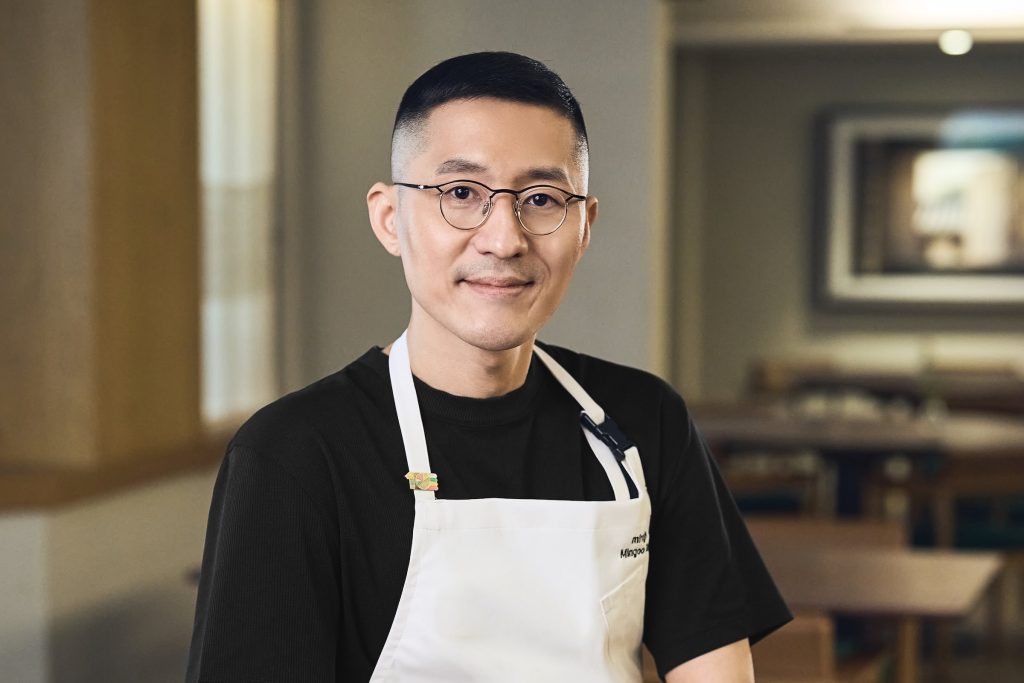
What ingredient are you most excited to highlight in your dishes for MGM x RR1HK Culinary Masters Macau 2025?
Korean pine-nut sauce. Korea has traditionally produced little dairy products, and traditional Korean cuisine does not often use dairy products. So when we want to make creamy texture, we often use nuts, and among the nut-based sauce, Korean pine-nut sauce is really attractive. Finely grind the savoury pine nuts, add ganjang and rice vinegar, and make a refreshing and savoury sauce to use as an appetiser.
How will your contribution to MGM x RR1HK Culinary Masters Macau 2025 harmonise with this year’s event theme? How will you balance your dishes with the other chefs?
Each course is designed to suit the characteristics of each chef. Since the flow is very important in [the] course menu, we, who are in charge of the middle course, will create a menu that is not too strong in taste or character, but still contains the charm of Korean food, so that it flows smoothly with the preceding and following dishes.
We are also in charge of the last dessert, and we plan to present a signature [dish] that has always been on the menu since Mingles opened in 2011.
What do you hope diners will take away with them after they experience MGM x RR1HK Culinary Masters Macau 2025?
I hope [diners will] feel like [they] have tasted a course that harmoniously blends the characters of all the chefs, and I hope [they] feel the charm of Korean food through the menu of Mingles, and even feel like [they] want to go to Korea.
What does luxury mean to you?
Providing an experience that cannot be bought, no matter how much money you pay. An experience that captures that space, moment, and emotion.
For more delicious details, visit rr1hongkong.com/culinary-masters-2025.





